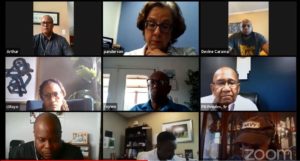In 1939 the California city now known as West Hollywood was a predominately working-class area populated by Jewish and Black residents. The Home Owners Loan Corporation labeled the area “in decline,” and “hazardous,” designations that made banks less inclined to provide mortgages in certain areas and have had a lasting impact on the property valuation of the area.
Now, decades later, the area is one of Los Angeles County’s most trend and expensive cities. West Hollywood’s housing expenses are 158 percent higher than the national average, according to Payscale. It’s demographic is 80.94 percent white and just 3.62 percent Black.
The West Hollywood City Council recently approved funding a historical study to understand the discriminatory housing practices against Black residents in West Hollywood. The council considers this move the first step to provide reparations to those Black residents and their descendants.
Spearheaded by Mayor Pro Tem Sepi Shyne and council member John Erickson, the study, which is expected to cost an estimated $100,000, will determine the long-term impact of redlining on the West Hollywood community.
West Hollywood communities that experienced redlining from the 1930s through the 1960s faced many challenges. Redlining made it difficult to receive mortgages with federal backing, making it impossible for potential homeowners from purchasing property in the area.
This ultimately led to the neighborhood’s decline into poverty while also perpetuating racial segregation. Ultimately West Hollywood’s decline led to less access to adequate education, health care, employment, and other resources needed by residents.
Although redlining was outlawed by the Fair Housing Act of 1968, the impact of systemic racism contributes greatly to the current wealth gap existing between white and Black Americans.
“People say reparations, you think it’s just gonna be cash,” Shyne told WeHoville.com “However, being a creative city, we can do many things, such as land-use policies, homeownership loans.”
“Whatever we do will not adequately address compounded generations of racism and discrimination and exclusion,” Councilmember Lindsey Horvath told Wehoville.com. “But hopefully we can do something meaningful that creates inclusion creates more opportunity.”
Read full story at Finurah here.




